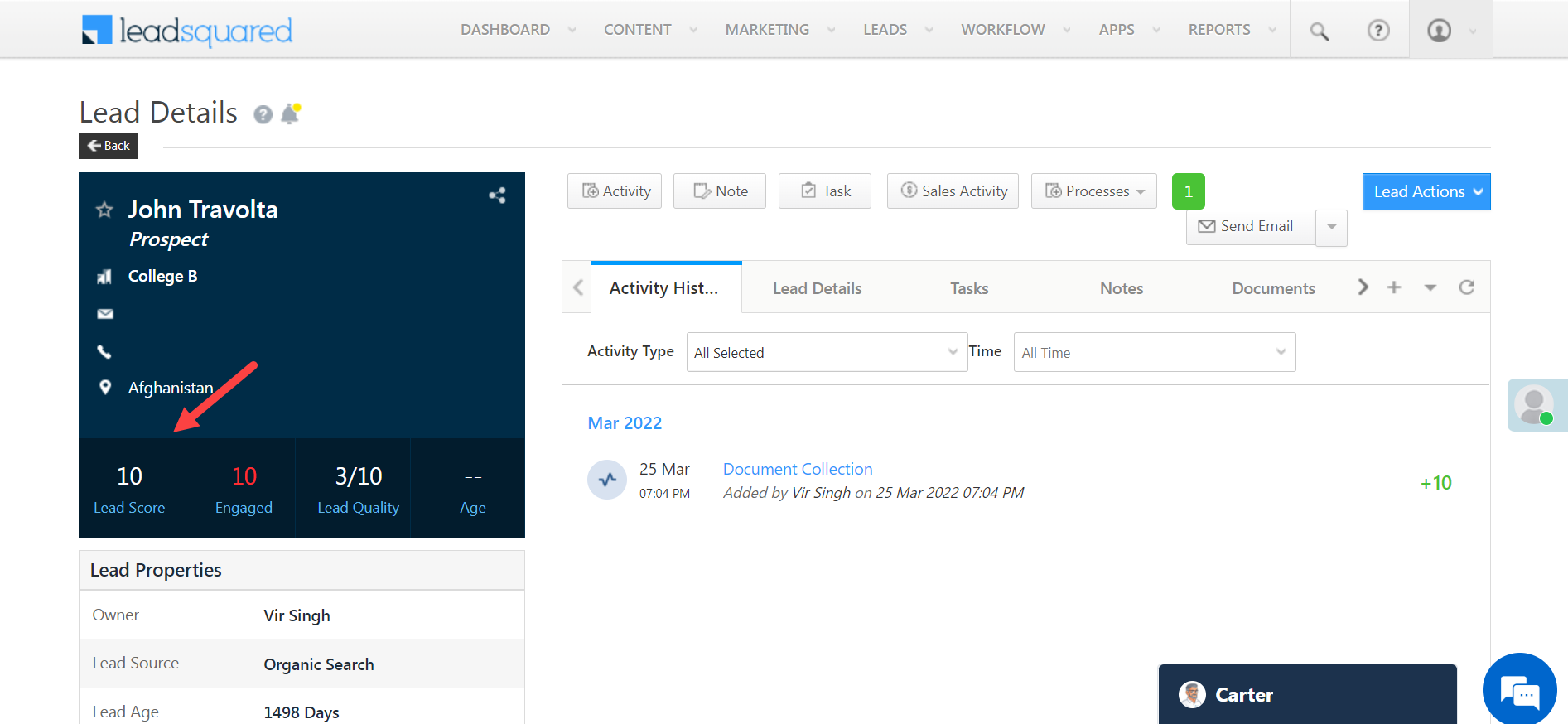Whether you’re a small business or a big enterprise, having a smart lead routing system can impact your sales performance and customer experience big time.
In this blog we’ll cover the basics of lead routing, lead assignment rules and best practices for routing leads to your sales team.
What is Lead Routing?
Lead routing is the process of assigning incoming leads to your sales team members. It ensures each lead is directed to the right sales rep as soon as possible, based on location, industry or specific needs. But lead routing is more than just an assignment process – it’s a strategic way to manage your sales pipeline and your team.
How Lead Routing Works
Lead routing involves a series of steps funnelling the lead to an appropriate sales rep.
- Lead capture: Gathering information about prospects from various sources.
- Lead qualification: Qualifying the lead’s value and buying readiness.
- Rule application: Applying pre-defined criteria to find the best match for the lead.
- Assignment: Assigning the lead to the right sales rep.
- Notification: Notifying the assigned rep of the new lead.
- Follow-up: Ensuring timely and proper contact with the lead.
Each of these steps is important to your lead routing strategy.
Why Lead Routing Matters
Every lead is different. They come from different cities, work in different industries, have different product interests and different budgets. To convert these leads into customers you need to match them with sales reps who can handle their specific needs and preferences.
The speed factor
According to Harvard Business Review, companies that contact prospects within an hour of a query are 7 times more likely to qualify the lead than those who contact the customer an hour later.
This highlights the need for fast and efficient lead routing. By assigning leads to the right sales rep quickly you can:
- Reduce response times
- Improve first contact quality
- Increase conversion
- Improve overall customer experience
The expertise factor
Beyond speed, lead routing also ensures leads are matched with sales reps who have the right expertise. This could mean:
- Industry knowledge
- Product specialization
- Experience with certain company sizes or types
- Language skills or cultural understanding
By matching leads with the right experts you increase the chance of conversations that address the lead’s specific needs and concerns.
The workload balance factor
Lead routing isn’t just about the leads – it’s also about your sales team. A good routing system ensures:
- No rep is overwhelmed with too many leads
- Each rep gets a mix of leads that match their skills and experience
- High value leads are distributed fairly
This balanced approach keeps team morale high, prevents burnout and ensures all leads get attention.
The automation factor
Manually assigning leads can be a time-consuming and error-prone process. This is where automation comes in. By using CRM software like LeadSquared you can automate your lead routing and get:
Efficiency
Automation reduces the manual workload and speeds up lead assignment. Instead of having a manager spend hours each day assigning leads, the system can do it in seconds based on pre-defined rules.
Consistency
An automated system ensures a more even distribution of leads among sales reps, no overloading. It follows the rules consistently, no human bias or oversight.
Speed
Leads are assigned faster, follow-ups are quicker and conversion potential increases. In a world where the first responder wins the sale, this speed is a big competitive advantage.
Smart routing
Integration with pre-defined rules means smarter routing decisions based on lead characteristics. The system can consider multiple factors at once, more than a human can in real-time.
Scalability
As your business grows and lead volume increases an automated system can handle the extra load without needing more manpower for lead assignment.
Data-driven insights
Automated systems can track and measure routing patterns and provide valuable insights to refine your routing rules and sales strategies over time.
9 Lead Assignment Rules
Let’s look at some of the most common lead assignment rules you can use in your automated lead routing:
Lead routing by territory/region
Assigning leads by location is one of the most popular routing methods. Sales reps can leverage their local knowledge and meet the lead in person if needed.
Benefits of territory-based routing:
- Local market knowledge
- Time zone alignment for better communication
- Face-to-face meetings
- Regional regulations or business practices
LeadSquared’s Mobile CRM allows you to set up territory-based routing rules so leads are always assigned to the right local rep.
Lead routing by lead score
Lead scoring is a method of ranking leads based on their conversion potential. Email opens, website visits and demo requests contribute to a lead’s score.
By routing high scoring leads to your most experienced sales reps you can ensure your best opportunities get the attention they deserve. This approach:
- Prioritizes high value leads
- Matches lead quality with rep experience
- Optimizes resource allocation
LeadSquared’s lead scoring can be integrated with routing rules so you can do dynamic score based assignments.

Lead routing by product/service preferences
Not all leads are interested in the same products or services. Routing leads by their interests ensures they’re connected with a rep who has expertise in that area.
This method:
- Improves the sales conversation
- Addresses specific product questions
- Enhances customer experience
LeadSquared allows you to set up routing rules by product interest so you can increase the chances of a sale.
Lead routing by industry
Different industries require different sales approaches. By routing leads to reps with experience in that industry you can give them more tailored and relevant pitches.
A study by SiriusDecisions found 67% of the buyer’s journey is now done digitally. This means when a lead does reach out they’re often well informed about their industry needs – so when you connect with them you need to be knowledgeable too.
Industry routing:
- Sector specific expertise
- Informed conversations
- Credibility with the lead
Lead routing by company size
A small startup has different needs than a large enterprise. Routing leads by company size ensures each lead gets the right level of attention and solutions.
Benefits:
- Matching sales approach to company complexity
- Product offerings to organizational needs
- Right resource allocation based on deal size
Lead routing by agent or lead attributes
This method involves matching leads with reps based on shared attributes or complementary skills. For example, a lead who prefers to communicate in Spanish would be routed to a Spanish-speaking rep.
Other attributes might be:
- Technical expertise
- Communication style
- Specific certifications or training
Lead routing by revenue potential or deal value
High value leads require a different approach. Routing these leads to your most experienced reps can help you close more of these big deals.
This approach:
- Prioritizes high value opportunities
- Matches complex needs with advanced expertise
- Optimizes resource allocation for maximum ROI
Lead routing by agent availability
No point in routing a lead to a rep who’s on vacation or overwhelmed with work. Routing by availability ensures leads are always assigned to reps who can give them immediate attention.
Benefits:
- Faster response times
- Better lead experience
- Better workload management
Lead routing using round robin method
This method involves distributing leads equally among all sales reps in a rotating sequence. It’s a fair way to distribute leads and can be good for teams with reps of similar skill level.
- Gives all reps an equal chance
- Simplifies the routing process
- Good for homogeneous teams or lead pools
Setting up an Automated Lead Routing Process with LeadSquared
LeadSquared’s CRM has the tools to set up and manage automated lead routing. Here’s how to get started:
- Define your routing rules based on what matters most to your business.
- Set up these rules in LeadSquared’s interface.
- Test with sample leads to make sure it’s working as expected.
- Monitor and adjust as needed for best results.
LeadSquared’s automation allows you to combine multiple routing rules to create a complex routing scenario.
Solving the Multiple or Duplicate Lead Assignment Challenge
One of the common lead management pitfalls is assigning the same lead to multiple sales reps. This can cause confusion, inconsistent messaging and a bad experience for the lead.
Consequences of duplicate assignments:
- Wasted time and resources
- Conflicting information
- Bad impression on the lead
- Difficulty in tracking lead progress
LeadSquared’s CRM has features to prevent duplicate assignments, so a single point of contact handles each lead. This improves the lead’s experience and saves your sales team’s time and effort.
Lead Routing Best Practices
To get the most out of your lead routing, follow these best practices:
Define clear routing criteria
Define your lead qualification criteria and set up routing rules accordingly. This might include:
- Demographic information
- Behavioral data
- Engagement metrics
- Preferences
Use a CRM like LeadSquared to automate your routing process, reduce errors and increase efficiency. Automation can make complex routing decisions in real-time, so leads are distributed optimally.
Real-time visibility
Give your reps immediate access to lead information when assigned. So they can:
- Understand the lead’s needs
- Prepare for first contact
- Give a personalized experience
Monitor and optimize
Review metrics like response time and conversion rates regularly to see where you can improve. Key metrics to track:
- Response time
- Conversion rates by rep or team
- Lead satisfaction scores
- Sales cycle length
Train your reps
Make sure your sales reps know the routing system and their role. This includes:
- Introduce them to the routing criteria
- Train them on the CRM system
- Set expectations for lead follow-up
Be adaptable
Be prepared to change your routing rules as your business grows and changes. Review your routing strategy regularly to make sure it’s aligned with your current business goals and market.
Benefits of Lead Routing
When done right, lead routing can have a big impact on your business. According to InsideSales.com, 35-50% of sales go to the vendor who responds first. By routing leads to the right sales rep, you increase your chances of being the first to respond.
Also, a well-implemented lead routing can:
Increase conversion rates
By matching leads with the right sales reps, you get better sales conversations and higher conversion rates.
Enhance customer experience
Fast response times and knowledgeable reps = happy customer
The happier the customer, the more likely they are to repeatedly buy from you, loyal customers are a huge contributor to successful businesses.
Boost sales rep morale and productivity
Fair lead distribution and matching reps with leads they can handle increase reps’ job satisfaction and enhance their performance.
Get valuable insights
Data from your lead routing system can give you insights into your sales process, team performance and market trends. Inform your decisions.
These benefits alone should be more than convincing to realize that lead routing is key to timely and efficient lead communication.
Summary
Fast and effective lead communication is a must-have in today’s competitive business world. Lead routing is the key to making sure that all leads that enter your business’s pipeline are channeled to the most appropriate representative and quickly.
Automate and follow best practices, and you can create a lead routing system that boosts your sales productivity and customer experience.
Don’t let leads fall through the cracks. Route leads with LeadSquared and see the conversions rise!







